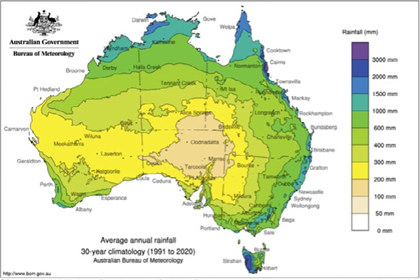101: Managing irrigation
Growing crops in Australia is not for the faint-hearted, especially when it comes to managing water. The challenge lies in the fact that we often have either too little or too much water, and not always at the right time. Farmers cannot rely on gentle, frequent rain to replenish soil water levels; managing water for crops needs deliberate and considered intervention. Read the full article in Issue 13 of PotatoLink Magazine.
Getting the most out of Bureau of Meteorology data
Following a PotatoLink online training webinar with senior members of the Bureau of Meteorology, Paulette Baumgartl has compiled a comprehensive article in Issue 09 of PotatoLink magazine pointing out that behind the weekly temperature and rainfall forecasts, and the much-loved radar, sits an abundance of data, both raw and interpreted. If you know where to look, this data can be a useful decision-making tool.
Weather tools from the Bureau of Meteorology (BOM)
Managing your growing crop with the weather in mind can be a challenge, so having a suite of forecasting and historical data available, can help with decision making. Join BOM’s team as they share what tools are available, where they can be found, how they work and how they are best used.
Smart farming using simple tech
In Issue 06 of PotatoLink magazine, Ryan Hall looks at the accessibility and mobility of technology available to growers in the form of drones, remote sensing and smartphone apps.
Setting up for summer - preparation for potato growers
As it warms up and your potato crop gets going Dr Kelvin Montagu and Marc Hinderager talk practical tools to help scheduling and monitor irrigation in potatoes.
Irrigation scheduling with IrriSAT
IrriSAT, is a free satellite-based irrigation scheduling app. It combines satellite images with weather data to estimate crop water use. Learn how it works and what you can use it for.
Jobs for the quieter months of the year
This PotatoLink magazine article discusses making the most of the quieter months preparing for next season’s crop — checking long-term weather forecast, soil testing, checking irrigation equipment, considering drainage, and managing pests and disease.











